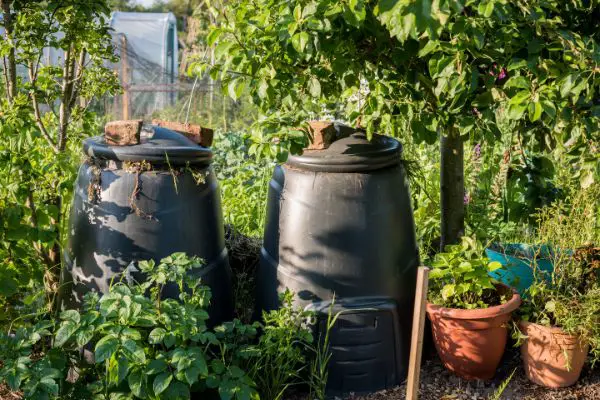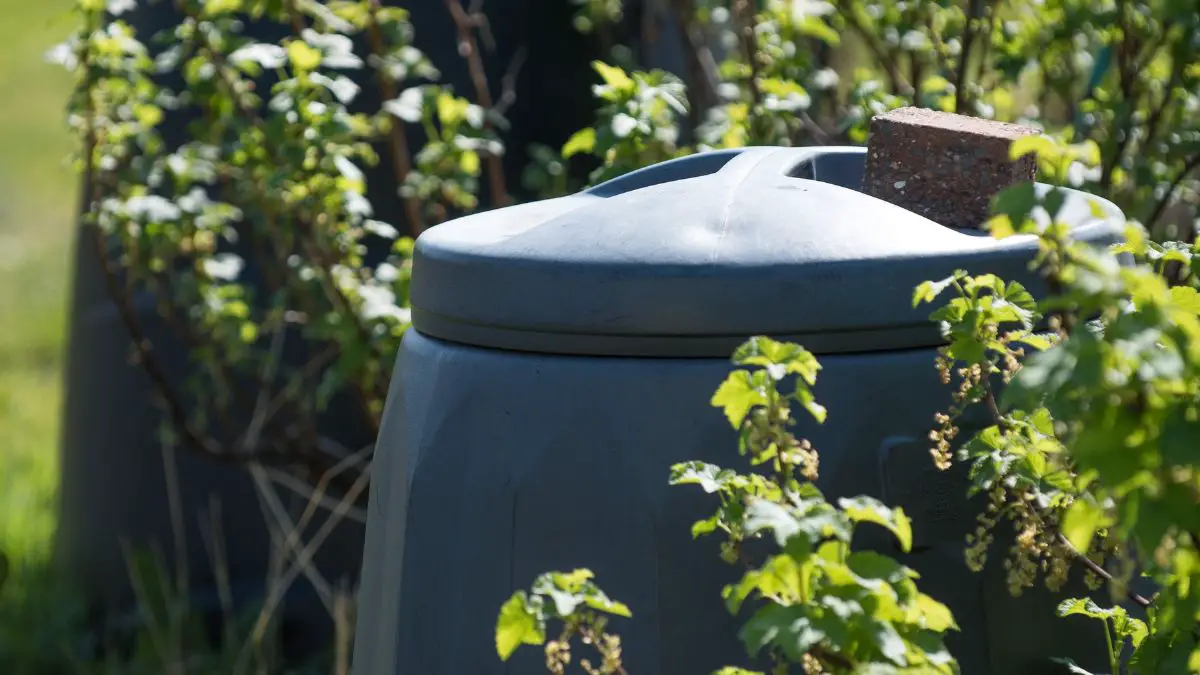Where To Place Compost Bin — Sun Or Shade?
Jumping into the world of compost is a big, exciting decision! But before you can really sink your teeth into creating your own fertilizer, you need to narrow down how and where to get started.
Many people opt to build a DIY compost heap using old pallets and chicken wire. You could also invest in a ready-to-go compost bin or tumbler. Or, if you’d rather keep your composting efforts indoors for now, a Bokashi bucket could be the right fit!
If you do decide to compost outdoors, location is super important. Placing your compost bin in the sun versus the shade could have a major impact on the success of your composting venture!
Here’s a quick and easy guide to placing your compost pile in the best location possible.
Does Compost Need Sunlight To Break Down?
Sunlight is not a vital part of the composting process itself. It can, however, play a key role in the temperature of your compost!
The amount of sun your compost pile receives on an average day will affect the compost’s overall temperature. And, as any experienced composter knows, heat is one of the most important factors in decomposition.
With that said, most of the heat generated by compost is a natural byproduct of the decomposition process. This is why healthy compost is warmer in the center than along the outside of the pile.
So does that mean every compost pile NEEDS sunlight? Nope! You can easily compost in total shade as long as you tailor your setup and method to suit the environment.

What Temperature Is Best For Composting?
Hot compost piles should be kept around 150°F. High temperatures speed up decomposition and kill off harmful pathogens.
When compost is below around 130°F, it becomes a breeding ground for parasites, flies, ants, and other pests. Many weeds can also survive these conditions. Meanwhile, temperatures above 160°F or so can harm the beneficial fungi and bacteria that make composting possible!
You can also compost at cooler temperatures. This technique, called cold composting, utilizes temperatures below 90°F. Cold composting produces usable fertilizer in 6 months or more. Some people find that cold compost piles more readily attract pests and give off odors than hot ones.
What To Know About Placing Compost In The Sun
Placing your compost bin in the sun means that you won’t need to worry as much about the internal temperature remaining high enough to kill pathogens and deter weeds. But a sunny location is not a replacement for a healthy compost pile overall!
Keep in mind that compost left in the sun is prone to drying out. Since the microorganisms that work hard to break down composted materials need water to live, this is bad news for a bin that remains dry for long.
Sunlit compost should be monitored and irrigated as needed.
Speaking of moisture balance, particularly sunny compost setups may respond better to more “green” materials than “brown” ones. Experiment with limiting the amount of cardboard, dead leaves, and similar carbon-rich materials if your compost gets a lot of sun.
What To Know About Placing Compost In The Shade
A natural consequence of placing compost in the shade is that it won’t absorb as much heat from the sun. While you can still maintain a hot compost system in this context, there’s a bit more room for error in terms of temperature.
Since compost bins located in the sun tend to dry out, it’s only natural that shaded bins will retain more moisture. But this isn’t always a good thing.
Be wary of your compost pile becoming too wet or even soggy if there’s no sunlight to dry it out. This is particularly a problem in rainy weather, or if your compost is located in a natural drainage path.
Too much moisture can interfere with oxygen levels in compost. And oxygen is another must-have resource for the microorganisms living inside! Frequently turning your shaded compost will help aerate it.
If your compost bin regularly struggles with moisture retention, consider upping the amount of brown matter being added to it.
What Is The Best Location For A Compost Bin In Your Yard?

It’s not as simple as saying sun or shade is best for all compost bins. Both locations come with pros and cons.
There’s also a very good chance you only have some control over where your compost bin is located!
These factors will help you determine where to set up your compost for the best results, as well as how to choose a composting method that suits your specific property:
Local Climate
Your local climate is probably the biggest determining factor in where you should set up your backyard compost. Someone living in the subtropics will have a much different experience than someone in a cooler region!
If your area trends hot, then choosing a shady spot for your compost bin may be best. This is especially true if your region is both hot and arid.
On the other hand, placing compost in a sunny location can be a good way to boost the internal temperature if your climate is cold throughout much of the year. You may need to supplement with extra moisture during the hottest part of the year. But you’ll effectively lengthen your compost’s “active” season in the spring and fall.
Container
The type of container (or lack thereof) could change the way sun and shade affect your compost.
Compost that is covered or kept in a closed container is more likely to overheat if placed in direct sunlight. Meanwhile, exposed compost could rapidly dry out if allowed to soak up the sun from morning until night!
Size
Smaller compost bins and piles are more susceptible to temperature changes than large ones. While it’s definitely possible to keep small composting setups in full sun or shade, you’ll need to keep a closer eye on things like internal temperature and moisture.
Frequently Asked Questions
Should a worm bin be kept in the sun or shade?
Your outdoor worm bin should be kept in the shade. While some sun is okay, you don’t want the bin to get too warm throughout the day. Worms can’t survive when the internal temperature gets too high! Placing your worm bin in a cool location will also keep it from drying out.
How much sun does a compost bin need?
In a perfect world, most compost should receive 4 to 6 hours of sunlight per day. This offers the benefits of a sunny location — i.e., increased temperature — with less chance of overheating or drying out!





